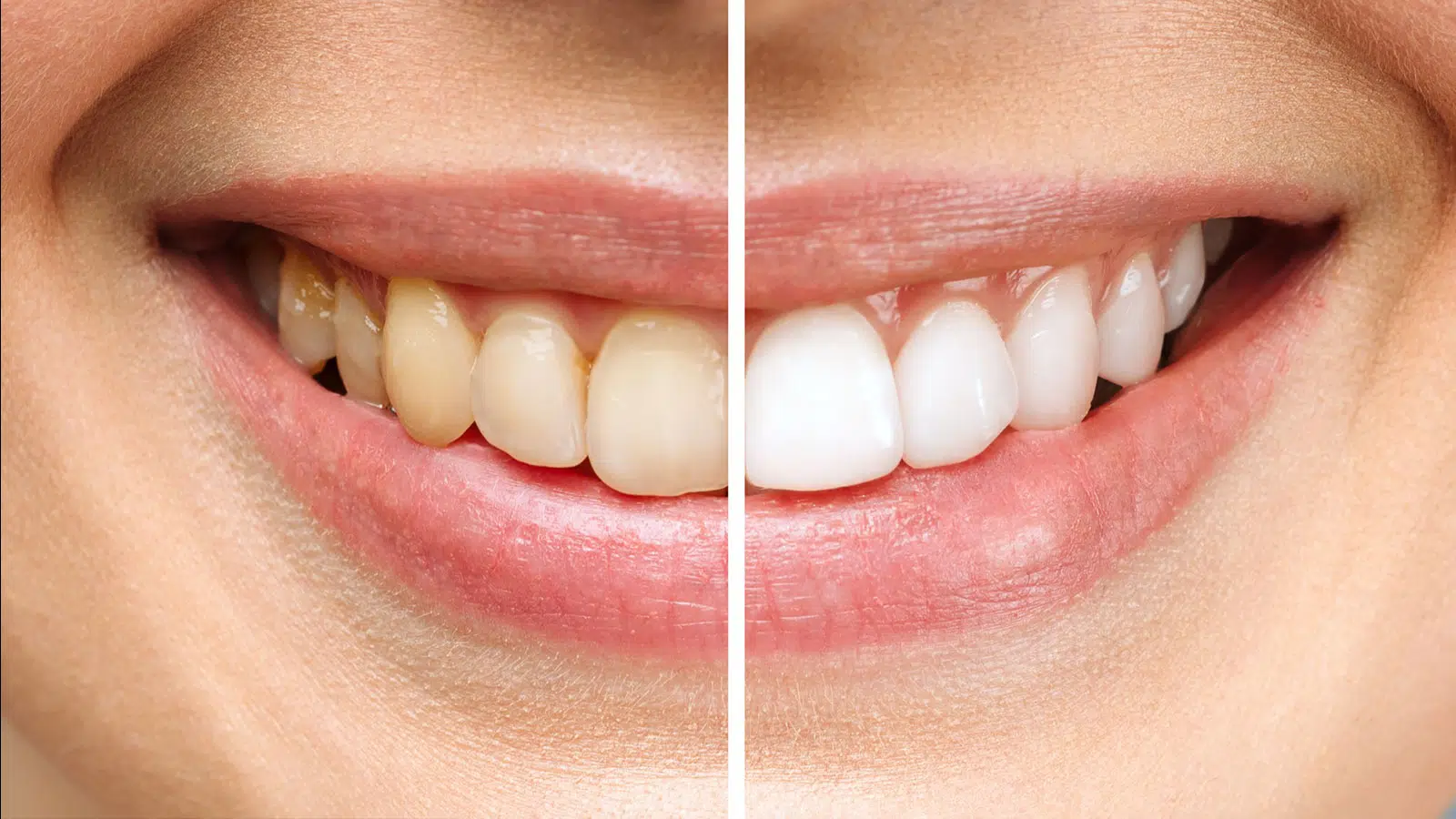Many people strive for a brighter, more attractive smile by achieving whiter and more beautiful teeth. Teeth whitening is one of the most common cosmetic procedures at the cosmetic dental clinic. There are multiple methods used for teeth whitening, and we will explore these methods along with their advantages and disadvantages:
Laser Teeth Whitening:
Laser teeth whitening is one of the fastest and most effective methods, providing immediate results. This method involves using a whitening gel containing hydrogen peroxide or carbamide, which is activated by laser beams. This process whitens the teeth, breaks down stains, and removes discoloration.
Advantages:
- Effective and fast results, that can be noticed after just one session.
- High degree of whitening.
- Safe when performed by a specialist.
Disadvantages:
- Some patients may experience temporary sensitivity after the session.
- Higher cost compared to other whitening methods.
Teeth Whitening Using Light (Zoom Whitening):
Also known as “blue light teeth whitening,” this method uses a high-concentration whitening gel applied to the teeth after placing a barrier to protect the gums. The gel is then activated using a special light.
Advantages:
- Quick results, one session is sufficient to achieve the desired outcome.
- Highly effective, significantly brightening the teeth.
Disadvantages:
- May cause temporary sensitivity.
- Requires special care after the session to maintain results.
Teeth Whitening Using Custom Trays:
This method relies on the use of custom trays made for each patient after the dentist takes precise measurements of the patient’s teeth to create the trays. Whitening gel is placed inside these trays, which are worn for a specific period each day (usually from one to several hours) for a week or more.
Advantages:
- Lower cost compared to laser or light whitening.
- Allows patients to control the degree of whitening based on usage duration.
- A good option for those who prefer at-home whitening under dental supervision.
Disadvantages:
- Results may take several days to appear.
- May cause tooth sensitivity if the dentist’s instructions are not followed carefully.
Teeth Whitening Using High-Concentration Whitening Gel:
In this method, the dentist applies a high-concentration whitening gel containing hydrogen peroxide to the teeth. The gel is left on for a specific period and then removed.
Advantages:
- Good and quick results are re visible after one session.
- Effective in removing deep stains.
Disadvantages:
- May cause temporary sensitivity.
- Requires follow-up sessions to maintain results.
Teeth Whitening Using Veneers:
This method involves placing thin shells of porcelain or composite materials on the surface of the teeth. These veneers help correct dental imperfections and achieve whiter, more beautiful teeth.
Advantages:
- Veneers hide color changes and discoloration, resulting in a bright, white smile.
- Quick and satisfying results.
- Durability, as veneers are made from durable materials that last a long time with proper care.
Disadvantages:
- Patients may initially find the texture of veneers unusual.
- May cause sensitivity in some individuals.
- High cost.
Achieving whiter and more beautiful teeth is a dream for many, and through the various teeth whitening methods offered by cosmetic dental clinics, this dream can become a reality.


